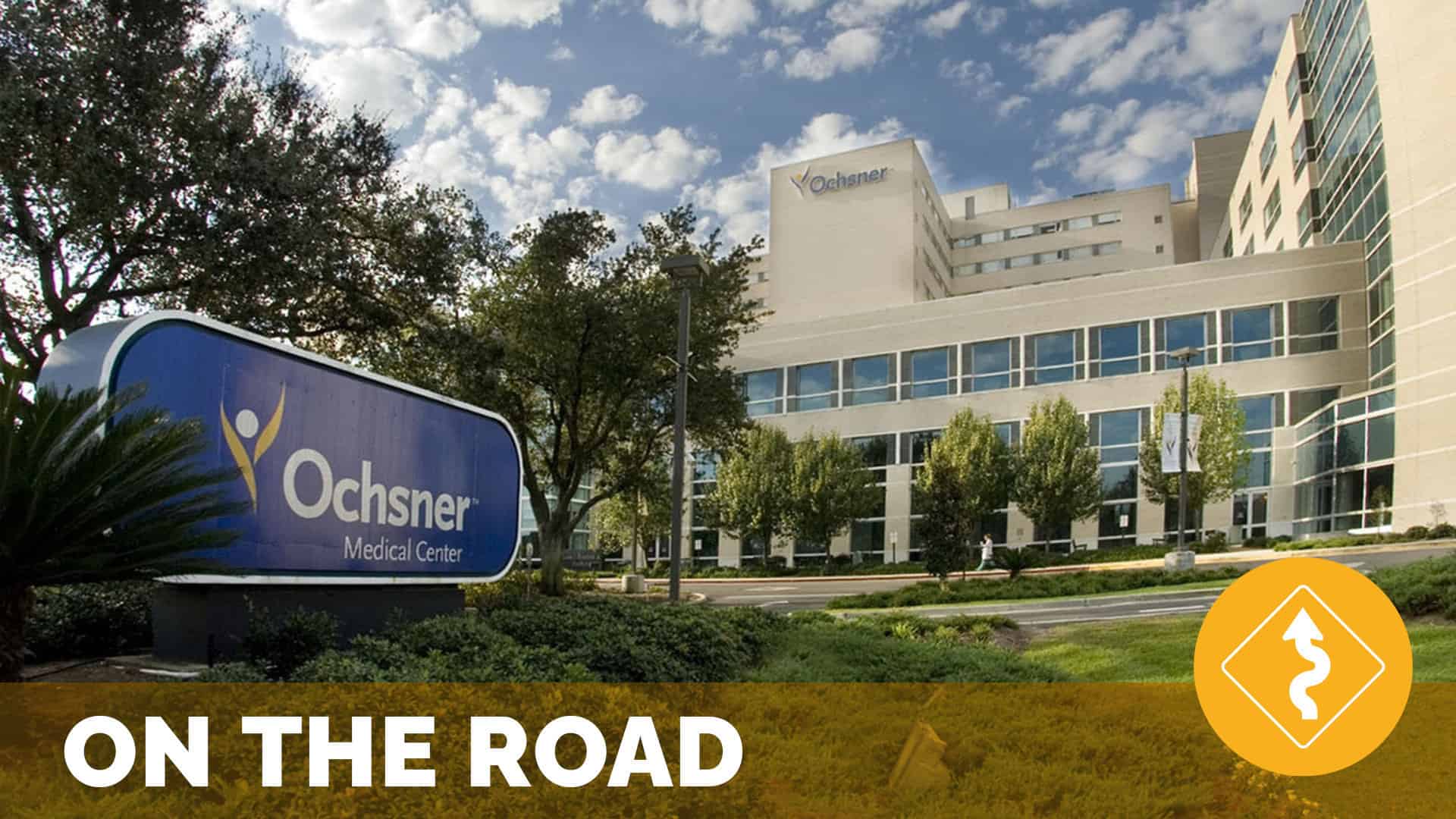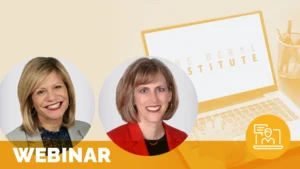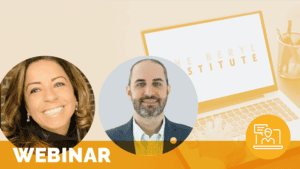The Definition of Patient Experience in Action

On the Road with Ochsner Health System – January 2013
by Jason A. Wolf
My January On the Road led me to the banks of the Mississippi to Ochsner Health System in New Orleans. As I entered the lobby atrium to meet my host Patrice Vance, System VP of Quality and Safety, I was immediately greeted by the calming tones of a piano playing. Mixed in with these notes was the quiet hum of conversations. This core of the hospital was a hub of activity, the feel of a town square with a coffee stand and gift shop, greenery and benches. I felt immediately comfortable and warmly welcome.
As I paused to take in the moment, one new sound broke the pattern. Then I heard it again. The words changed, but the tone remained strong and open “Hello Sugar, Welcome to Ochsner! Good morning there, how’re y’all doing this morning?” and more variations kept popping in. To the end of the atrium at the elevator entrance to the lobby stood Betty Wells. Ms. Betty, as she is known, was adorned in pins she received as gifts from staff, patients and guests, and she was busy greeting everyone that arrived. Her greetings were heartfelt and her care tangible. In the first few moments I stood there with her she greeted, helped people find their way and shared stories of her over 30 years at Ochsner.
Ms. Betty and Jason WolfMs. Betty (pictured left with Jason Wolf) said, “Honey, I may have the best job in the world. I am excited to get here and come in happy and after my eight hours I leave here happy. I help people, I hear happy stories and those real sad, but these people come to know me, trust me and look for me. I am here to make them know they are welcome.” Ms. Betty’s story reaches far beyond the walls of Ochsner Health System. She was even featured in the book Building a Magnetic Culture by Kevin Sheridan.
In as much as Ms. Betty herself is an institution, she represented something bigger I was about to learn about Ochsner Health System. Their intention to creating these moments of powerfully personal contact was tangible, and their commitment to patients, families, guests and the community was palpable. I too realized in my conversations with members of the Ochsner Health System team that I was seeing the definition of patient experience itself in action.
At The Beryl Institute we define the patient experience as the sum of all interactions, shaped by an organization’s culture, that influence patient perceptions across the continuum of care.What I saw at Ochsner Health System were actions that supported each of the central ideas found in these words, in particular the concepts at the heart of the definition, interactions and culture. Of significance here is that Ochsner Health System was not acting in these ways to follow the definition, but rather the actions they took, rooted in the people and culture of the organization, brought the definition to life.
The Sum of All Interactions
Ms. Betty serves as an example of the power of interactions at all points in the care continuum influencing experience. More so, her efforts served as a model for others in the organization and reinforced the ideas of Ochsner Health System’s founder and namesake, Alton Ochsner, MD. He once said, “The modern institution of healing must be permeated with an atmosphere of consideration, courtesy and kindness, not only to the patient but also toward his relatives.” This idea is also found at the center of “The Ochsner Way”, which recognizes service as an individual experience for patients and families and colleagues alike. The Ochsner Way simply stated is, “Delivering a great experience…every day…to all patients…at all locations…by each of us.”
This idea that every interaction matters was much more than words and reached far beyond the powerful presence of Ms. Betty herself. Trudi Stafford, Chief Nursing Officer (pictured right) for Ochsner Medical Center, shared an example of how personal initiative has led to positive interactions around the organization. As she shared the story she noted the strong commitment that existed to creating a high touch environment. As CNO, she sees the Emergency Department (ED) as a barometer for what is happening in the organization overall. A chaotic ED often means a chaotic facility in general. When she arrives at the facility in the mornings, she likes to walk the ED as a patient would to gauge the current state and prepare for the day ahead.
One morning, recently she arrived at the ED to find the young woman who was usually seated behind the registration desk standing just inside the front door of the ED. When Trudi entered the doors, the young women warmly welcomed her to Ochsner and asked her if she could help her with anything. This simple action was representative of the initiative to ensure personal interactions at Ochsner. As Trudi shared, this young woman was not busy at the time so she took it upon herself to be the “Ms. Betty” for the ED. She made a little choice that made a big difference for many arriving to the ED that morning.
The 10/5 Way
This opportunity for interaction is not only spontaneous at Ochsner, but also wired into the expected, “non-negotiables” for behavior of staff at all levels. Just as important to the clarity of expectation was the focus and powerful simplicity of these required actions. This is best exemplified by one practice called “The 10/5 Way”.
The 10/5 Way is a means for greeting, acknowledging and engaging patients, family and colleagues in the facility. The clear expectation also provides a common language for staff to intervene and provide feedback to one another when they see The 10/5 Way may not be in effect. The process is a simple but effective means to foster positive interactions in the facility. In all areas, clinical and public spaces, staff members are expected to make eye contact within 10 feet of someone they are approaching. This means individuals must make direct eye contact, smile and acknowledge the individual they are passing or meeting. At 5 feet the expectation is that one offers a greeting, either verbal or nonverbal. This means that individuals must offer a greeting with words or appropriate body language, smile, say hello, ask if help is needed or directions required. Key to this practice is that it is required of everyone, from housekeepers to senior executives, clinicians to support staff.
Patrice Vance reinforced the importance of these structured interactions offering, “We are committed to be as good on the inside, as people know us to be on the outside; and this happens in every encounter, shapes every experience, in every location, every time.” At Ochsner, they recognize and act to ensure that every interaction is a personal and positive experience.
Shaped by Culture
The example shared by Trudi Stafford of being the Ms. Betty of the ED, reinforced the intentional focus on interactions. She stressed this was not a collection of disjointed actions, but rather exemplified a culture that was rich in personal initiative. It is an environment where staff can take on efforts to do what is right and to ensure people are treated the way they expect; the way we would want to be treated ourselves.
As she revisited the ED example, Trudi shared how the culture of Ochsner was focused on supporting these positive efforts. In fact the ED staff member’s peers urged she be recognized for her action. The story was shared in the executive team huddle that day and the individual is slated to be recognized at the quarterly leadership meeting. Trudi noted how the power of sharing stories and acknowledging positive actions was at the core of the ability to grow and sustain a culture of service overall.
Of significance, both Patrice and Trudi shared in our conversations that people come to Ochsner to practice or provide care because of the nature of the organization itself. Trudi noted, “We were patient-centered before it was even a buzzword.” And as patient centeredness is key to the actions people take, as exemplified by Dr. Ochsner’s quote above, of equal importance is the environment of collegiality established in allowing the process to stick.
The system is focused intently on development, holding quarterly leadership meetings for updates, learning and recognition. This process of engaging staff has led to a workforce with extensive tenure, with some having been part of the organization for 30 or even 40 years. While sometimes, as in any organization there may be some resistance to change, the team at Ochsner has found ways to celebrate change and engage its team.
Everyone I had the chance to speak with talked about a sense of ownership and pride. Patrice talked about the transparency of information and the willingness to listen to staff. Erin Wray, Assistant Vice President of Performance Improvement shared how the efforts they drive to impact and improve experience is grounded in asking and understanding what staff see and what ideas they have for improvement.
Trudi noted that giving ownership to the front line was key in maintaining the culture they have at Ochsner. Engaging people and allowing they to run with ideas, rather than waiting for them to be “wrapped in a bow”, creates an environment of respect and trust. It is ensures the ability to stay nimble in the chaotic healthcare environment we face today. She also suggested that role modeling at all levels is key to success. This is exemplified in the case of Ms. Betty and also Bobby Brown, Team Leader, Food/Nutrition Catering (pictured left with our host Patrice Vance). I had the chance to meet Bobby during my tour. He was running off to take care of a patient but stopped to welcome me and talk about how important it was for him to be able to make the decisions necessary to take care of the patients, families and colleagues that were in the facility every day. Then just before he turned to run off to continue his mission he smiled and asked me, “Is there anything I can do for you to make your visit better? Don’t hesitate to let me know.” (See video of Bobby Brown)
As an organization founded by physicians and built on an employed physician base, the role of the medical staff is central to all that is done at Ochsner. While organizations reach out to The Beryl Institute often to ask about strategies to engage physicians (in fact we just held a wonderful topic call on this subject), it was evident there was a great deal of commitment to the organization and its patient experience efforts from the medical staff.
I had the chance to meet with Dr. Nigel Girgrah, Medical Director of Ochsner’s leading Multi-Organ Transplant Institute to talk about the physician focus on and commitment to the experience at Ochsner. It might have been no clearer then when Dr. Girgrah opened by saying, “Patient experience is our strategic imperative!” But moving beyond this strong statement, he shared a core process of how physicians are engaged in overall patient experience efforts. Patient survey scores are shared with doctors quarterly, to track and address any experience issues. They are used to provide self-understanding and reinforce the importance of compassion in their day-to-day work. Performance is also addressed based on the results with small bonuses being linked to positive performance and required learning associated with poorer performance.
Reinforcing the importance of interactions and the foundation of culture Dr. Girgrah shared the process he uses specifically in the Multi-Organ Transplant Institute as well. The team meets monthly to review scores and the Institute also has a patient experience sub-committee to address any significant issues or opportunities. Dr. Girgrah recognizes that experience is much more than satisfaction. It impacts outcomes, shapes reputation and influences referrals and therefore must be dealt with organizationally. He acknowledged that it is also an issue driven by employee engagement.
To address this he shared perhaps one of the greatest practices I have seen for working with physicians (and healthcare teams), both for its practicality and simplicity. It is based on three questions that Dr. Girgrah asks of his team:
- Am I fulfilled at work? Am I making this the best place to work for my co-workers?
- Did I go the extra mile for our patients?
- Did I connect with our referring partners and make sure they know Ochsner is the place to send their patients?
In these three questions, much of today’s discussion of patient experience is realized. There are significant opportunities in ensuring a culture of engagement that provides the best platform for delivering quality care and service. The interactions we have with each patient (and family member) are central to a positive and successful healthcare experience. The cultural foundation and the interactions an organization creates will drive the success of an organization in an increasingly competitive healthcare marketplace.
Without engaging him directly on the definition of patient experience Dr. Girgrah, though his practices, exemplified both the power of culture and the importance of interactions in healthcare today. These concepts will remain central to our ability to impact patient perception and ensure unparalleled experience. This example from the team at Ochsner provide a simple, yet profound model for action.
Who is Your Sunshine? The Power of Personal Initiative
As I was wrapping up my visit, Patrice reiterated that at Ochsner, “Every single person is aware they play a key role.” This echoed something Trudi shared with me as well in describing the picture of the patient experience at Ochsner. That it is personalized and friendly, that it is based on the best healing environment and that it is supported by the best working environment for staff.
The team at Ochsner has tackled the complex environment of experience with graceful simplicity and powerful focus. With a commitment to positive interactions and a solid cultural foundation built on a rich history they seem to be living the definition of patient experience each and every day. Back in the active hustle of the lobby once more I was speaking with Ms. Betty about what was special about Ochsner to her. She proudly said, “It is the people and these are my people. The patients, their families, our guests and my colleagues, they are my people!” Then she just grinned and let out a big laugh as the elevator doors opened and she quickly pivoted to greet the newest arrivals, “Welcome to Ochsner”, she exclaimed, “Now how can I help you?” (See video of Betty Wells)
I couldn’t help but smile and Patrice grinned too. The focus on experience at Ochsner was subtle, yet clear and grounded in history and pride. It was built on an unwavering purpose of serving others and rooted in the connections you could not only see, but also feel among staff. Patrice looked back at Ms. Betty and said, “She is my sunshine.” It was this sunshine that filled the lobby atrium, the piano music still warming the air, and the hum of conversations, what I now know as “The Ochsner Way”, was hard at work.
Related content
-
 Culture & Leadership | Staff & Provider Engagement
Culture & Leadership | Staff & Provider EngagementEnterprise Volunteer Management: From Silo to Systemness
The ever-changing healthcare environment has required hospitals across the country to rethink how they deliver care and support services. Inova Health System in Northern Virginia has been on a transformational journey to embed a culture of collaboration across the organization. Volunteer Services is one of the areas that has shifted from a silo-based to an
Learn more -
 Culture & Leadership | Patient Family & Community Engagement
Culture & Leadership | Patient Family & Community EngagementNational Human Experience Movement Led by SOBREXP in Brazil
Global Headliner Webinar Series (Complimentary) – Join this webinar to discover the inspiring journey of Brazil’s National Movement in Human Experience, led by SOBREXP, the Brazilian Society of Patient Experience and Person Centered Care. Learn about the timeline, strategies, challenges, and key achievements that have shaped this groundbreaking effort to elevate the human experience. Tuesday,
Learn more -
 Culture & Leadership
Culture & LeadershipPX Champions: Improving our Impact by Broadening our Reach
How can we ingrain patient experience into our organization’s culture? This is the question our team pondered as we developed the 2024 strategy for our medical group. At that time, patient experience (PX) was something teams focused on, but mostly when scores were low. It was our goal for PX to be a foundation from
Learn more
